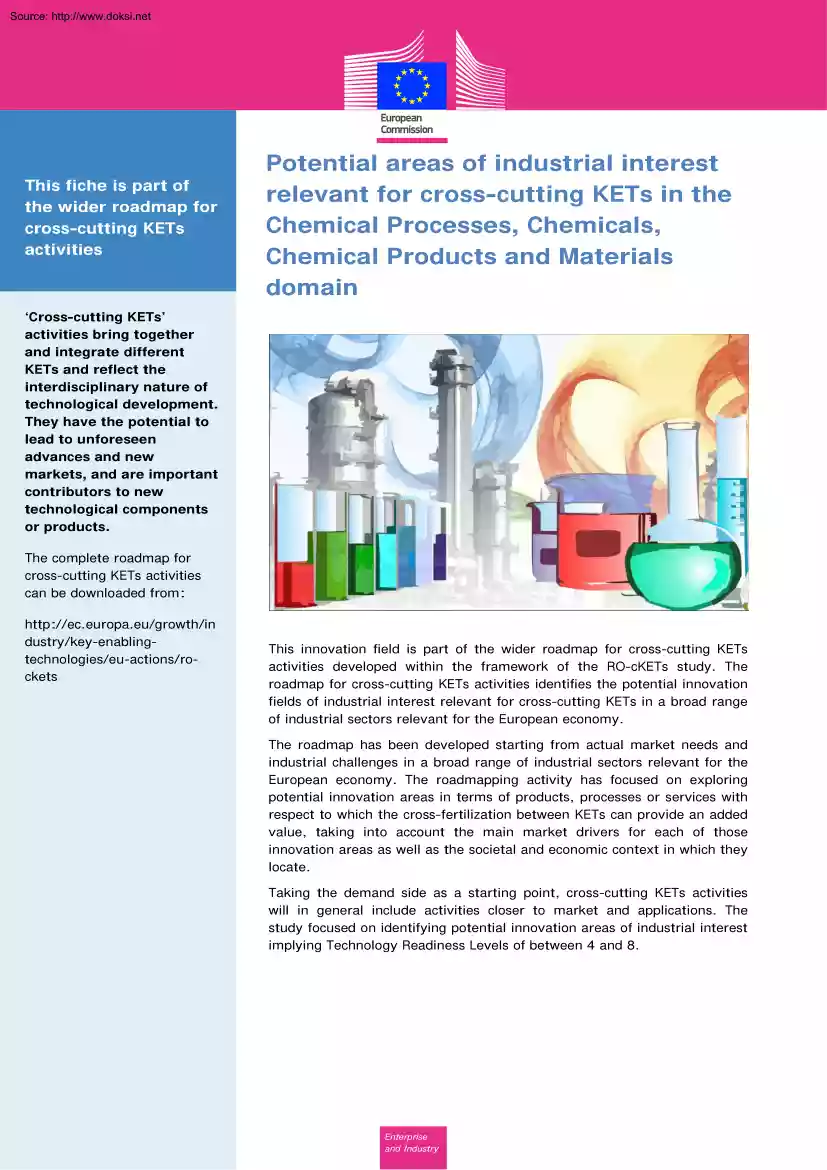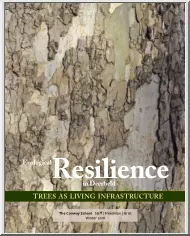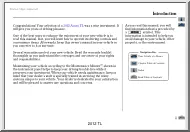A doksi online olvasásához kérlek jelentkezz be!

A doksi online olvasásához kérlek jelentkezz be!
Nincs még értékelés. Legyél Te az első!
Mit olvastak a többiek, ha ezzel végeztek?
Tartalmi kivonat
Source: http://www.doksinet This fiche is part of the wider roadmap for cross-cutting KETs activities Potential areas of industrial interest relevant for cross-cutting KETs in the Chemical Processes, Chemicals, Chemical Products and Materials domain ‘Cross-cutting KETs’ activities bring together and integrate different KETs and reflect the interdisciplinary nature of technological development. They have the potential to lead to unforeseen advances and new markets, and are important contributors to new technological components or products. The complete roadmap for cross-cutting KETs activities can be downloaded from: http://ec.europaeu/growth/in dustry/key-enablingtechnologies/eu-actions/rockets This innovation field is part of the wider roadmap for cross-cutting KETs activities developed within the framework of the RO-cKETs study. The roadmap for cross-cutting KETs activities identifies the potential innovation fields of industrial interest relevant for cross-cutting KETs in a
broad range of industrial sectors relevant for the European economy. The roadmap has been developed starting from actual market needs and industrial challenges in a broad range of industrial sectors relevant for the European economy. The roadmapping activity has focused on exploring potential innovation areas in terms of products, processes or services with respect to which the cross-fertilization between KETs can provide an added value, taking into account the main market drivers for each of those innovation areas as well as the societal and economic context in which they locate. Taking the demand side as a starting point, cross-cutting KETs activities will in general include activities closer to market and applications. The study focused on identifying potential innovation areas of industrial interest implying Technology Readiness Levels of between 4 and 8. Enterprise and Industry Source: http://www.doksinet CH.25: Coatings and surfaces with anti-fouling or self-cleaning
properties Scope: Coatings and surfaces with anti-fouling or self-cleaning properties able to recognise and inhibit e.g bio-fouling agents, pollutants, corrosion agents, etc. Demand-side requirements (stemming from Societal Challenges) addressed: • Indirectly tackle challenges such as “climate action, resource efficiency and raw materials”, “smart, green and integrated transport” and “secure, clean and efficient energy” thanks to contributing higher performing materials for various applications that are key to the achievement of the aforementioned challenges Demand-side requirements (stemming from market needs) addressed: • Production of high performing materials with improved functionalities Specific technical/industrial challenges (mainly resulting from gaps in technological capacities): • • Understanding and prediction of the relationships among chemistry, microstructure and material properties/ performance Control of functional properties and performance
through synthesis and processing Contribution by cross-cutting Key Enabling Technologies: In respect to this Innovation Field, the integration of KETs could contribute to the development of more advanced coatings and surfaces with anti-fouling or self-cleaning properties, thanks to adjusting chemistry, microstructure and material properties/ performance and the precise control of their functional properties and performance through specialized synthesis and processing. To this aim, the combination of KETs experts’ opinions collected through the dedicated survey (whose result is depicted in the below bar chart), the examination of KETs-related patenting activity in respect to this Innovation Field, and desk research activities, have allowed identifying a rather strong interaction of KETs with respect to this Innovation Field, with either fundamental or important contribution mainly by the following KETs: • • • Advanced Manufacturing Systems (AMS) Advanced Materials (AM)
Nanotechnologies (N-T) 100% 90% Share of answers 80% 70% 60% Fundamental+Important 50% Fundamental 40% Important 30% 20% 10% 0% AMS AM I-B MNE N-T PhT Timing for implementation: According to the majority of KETs experts’ opinions (whose result is depicted in the below bar chart), desk research, and in line with the KETs-related patenting activity in this field, it is considered that the main technological issues holding back the achievement of cross-cutting KETs based products related to this Source: http://www.doksinet Innovation Field could be solved in a time frame of more than 5 years, yet significant consensus by experts indicates also shorter periods being necessary: 100% 90% Share of answers 80% 70% 60% 50% 40% 30% 20% 10% 0% No main technological issues left Technological Technological Technological issues solved in issues solved in 2 issues solved in less than 2 years to 5 years more than 5 years Time frame unknown Hence, depending on the specific
technical and/or industrial challenges holding back the achievement of crosscutting KETs based products related to this Innovation Field, the provision of support in the short to medium term should be taken into consideration within this framework. Additional information according to results of assessment: Impact assessment: • Anti-microbial coatings were the majorly consumed coatings among self-cleaning, anti-bacterial, and anti-fouling coatings in 2012. Anti-fouling and easy-to-clean coatings were the second largest consumed coatings in the market. They are expected to grow on account of their increasing usage in end-uses such as industrial engineering, marine, food manufacturing, automotive and energy among others. Anti-fingerprint coatings are also expected to grow quickly due to rising demand from the electronics, medical and healthcare sectors. Moreover, there is significant demand of this type of coatings from the building and construction industry as they inhibit
microbial growth, mildew and algae formation. Self-cleaning, anti-bacterial, and anti-fouling coatings are also widely used in food manufacturing, packaging, textiles and water treatment among others. • The demand for anti-fouling coatings has been largely driven by the marine industry. Although ship newbuilding continues to decline, the market for marine coatings benefitted from an increase in ship repair and maintenance, thus growing steadily in 2012. The global market is also expected to continue to grow at around 4% globally, with Asia continuing to grow and both Europe and the US flattening down. Marine coatings manufacturers are especially focusing their efforts on developing anti-fouling coatings that will decrease maintenance costs and increase vessel efficiency with the driver being an increased awareness of the importance of hull and anti-fouling performance with regards to influence on vessel efficiency. In this regard, significant savings in fuel consumption and carbon
dioxide emissions can be achieved. The global marine coatings market is highly consolidated since the top 4 players, among them the European multinational AkzoNobel, contribute nearly 80% of the total production (Sources: Coatings World, The Marine Coatings Market, August 2013; Transparency Market Research, Marine Coatings Market - Global Industry Analysis, Size, Share, Trends, Analysis, Growth and Forecast, 2012-2018). • Besides the more consolidated markets for, especially, anti-fouling marine coatings, high market potentials for, especially, self-cleaning coatings are expected in the energy and the construction sectors. In the energy sector, self-cleaning coatings could be successfully applied to glass as well as mirror surfaces used in photovoltaics (PVs), concentrated photovoltaics (CPVs) and concentrated solar power systems (CSPs) in order to reduce maintenance costs whilst maintaining conversion efficiencies high. Moreover, self-cleaning coatings added with multiple components
could improve service life and impart corrosion or abrasion resistance to wind turbines used mainly in deserts and offshore locations facing air borne sand-related damage. In the construction sector, coats and paints capable to repel dirt and pollution could be successfully applied in order to reduce maintenance costs of buildings, including historic ones. Source: http://www.doksinet Results of patents scenario analysis: • 1570 exclusively KETs-related patents identified in the period 2001-2011 for the specific Innovation Field • Stable trend curve (number of patents per year) • Highest share of industrial applicants: • Patents by KET(s): TOTAL AM MNE AMS PhT N-T I-B 1570 1241 219 • 189 106 78 11 Patents by KET(s) and relevant combinations of KETs: KET(s) AM AM / IBT Number of patents 1241 3 AM / IBT / N-T 1 AM / MNE 67 AM / MNE / N-T 7 AM / MNE / N-T / PhT 2 AM / MNE / PhT 12 AM / N-T 59 AM / N-T / PhT 3 AM / PhT 42 AMS 189 AMS / AM
52 AMS / AM / MNE 3 AMS / AM / N-T 1 AMS / AM / PhT 1 AMS / MNE 18 Source: http://www.doksinet KET(s) Number of patents AMS / N-T 1 AMS / PhT 1 IBT 11 IBT / MNE 1 IBT / N-T 1 MNE 219 MNE / N-T 10 MNE / N-T / PhT 5 MNE / PhT 43 N-T 78 N-T / PhT 7 PhT • 106 Patent distribution by (Applicant) organization geographical zone: North America 30% Other 2% Asia 44% Europe 24% • Patent distribution by geographical zone of priority protection: EU 16% WO+OTH 30% US+CA+AU 22% ASIA 32%
broad range of industrial sectors relevant for the European economy. The roadmap has been developed starting from actual market needs and industrial challenges in a broad range of industrial sectors relevant for the European economy. The roadmapping activity has focused on exploring potential innovation areas in terms of products, processes or services with respect to which the cross-fertilization between KETs can provide an added value, taking into account the main market drivers for each of those innovation areas as well as the societal and economic context in which they locate. Taking the demand side as a starting point, cross-cutting KETs activities will in general include activities closer to market and applications. The study focused on identifying potential innovation areas of industrial interest implying Technology Readiness Levels of between 4 and 8. Enterprise and Industry Source: http://www.doksinet CH.25: Coatings and surfaces with anti-fouling or self-cleaning
properties Scope: Coatings and surfaces with anti-fouling or self-cleaning properties able to recognise and inhibit e.g bio-fouling agents, pollutants, corrosion agents, etc. Demand-side requirements (stemming from Societal Challenges) addressed: • Indirectly tackle challenges such as “climate action, resource efficiency and raw materials”, “smart, green and integrated transport” and “secure, clean and efficient energy” thanks to contributing higher performing materials for various applications that are key to the achievement of the aforementioned challenges Demand-side requirements (stemming from market needs) addressed: • Production of high performing materials with improved functionalities Specific technical/industrial challenges (mainly resulting from gaps in technological capacities): • • Understanding and prediction of the relationships among chemistry, microstructure and material properties/ performance Control of functional properties and performance
through synthesis and processing Contribution by cross-cutting Key Enabling Technologies: In respect to this Innovation Field, the integration of KETs could contribute to the development of more advanced coatings and surfaces with anti-fouling or self-cleaning properties, thanks to adjusting chemistry, microstructure and material properties/ performance and the precise control of their functional properties and performance through specialized synthesis and processing. To this aim, the combination of KETs experts’ opinions collected through the dedicated survey (whose result is depicted in the below bar chart), the examination of KETs-related patenting activity in respect to this Innovation Field, and desk research activities, have allowed identifying a rather strong interaction of KETs with respect to this Innovation Field, with either fundamental or important contribution mainly by the following KETs: • • • Advanced Manufacturing Systems (AMS) Advanced Materials (AM)
Nanotechnologies (N-T) 100% 90% Share of answers 80% 70% 60% Fundamental+Important 50% Fundamental 40% Important 30% 20% 10% 0% AMS AM I-B MNE N-T PhT Timing for implementation: According to the majority of KETs experts’ opinions (whose result is depicted in the below bar chart), desk research, and in line with the KETs-related patenting activity in this field, it is considered that the main technological issues holding back the achievement of cross-cutting KETs based products related to this Source: http://www.doksinet Innovation Field could be solved in a time frame of more than 5 years, yet significant consensus by experts indicates also shorter periods being necessary: 100% 90% Share of answers 80% 70% 60% 50% 40% 30% 20% 10% 0% No main technological issues left Technological Technological Technological issues solved in issues solved in 2 issues solved in less than 2 years to 5 years more than 5 years Time frame unknown Hence, depending on the specific
technical and/or industrial challenges holding back the achievement of crosscutting KETs based products related to this Innovation Field, the provision of support in the short to medium term should be taken into consideration within this framework. Additional information according to results of assessment: Impact assessment: • Anti-microbial coatings were the majorly consumed coatings among self-cleaning, anti-bacterial, and anti-fouling coatings in 2012. Anti-fouling and easy-to-clean coatings were the second largest consumed coatings in the market. They are expected to grow on account of their increasing usage in end-uses such as industrial engineering, marine, food manufacturing, automotive and energy among others. Anti-fingerprint coatings are also expected to grow quickly due to rising demand from the electronics, medical and healthcare sectors. Moreover, there is significant demand of this type of coatings from the building and construction industry as they inhibit
microbial growth, mildew and algae formation. Self-cleaning, anti-bacterial, and anti-fouling coatings are also widely used in food manufacturing, packaging, textiles and water treatment among others. • The demand for anti-fouling coatings has been largely driven by the marine industry. Although ship newbuilding continues to decline, the market for marine coatings benefitted from an increase in ship repair and maintenance, thus growing steadily in 2012. The global market is also expected to continue to grow at around 4% globally, with Asia continuing to grow and both Europe and the US flattening down. Marine coatings manufacturers are especially focusing their efforts on developing anti-fouling coatings that will decrease maintenance costs and increase vessel efficiency with the driver being an increased awareness of the importance of hull and anti-fouling performance with regards to influence on vessel efficiency. In this regard, significant savings in fuel consumption and carbon
dioxide emissions can be achieved. The global marine coatings market is highly consolidated since the top 4 players, among them the European multinational AkzoNobel, contribute nearly 80% of the total production (Sources: Coatings World, The Marine Coatings Market, August 2013; Transparency Market Research, Marine Coatings Market - Global Industry Analysis, Size, Share, Trends, Analysis, Growth and Forecast, 2012-2018). • Besides the more consolidated markets for, especially, anti-fouling marine coatings, high market potentials for, especially, self-cleaning coatings are expected in the energy and the construction sectors. In the energy sector, self-cleaning coatings could be successfully applied to glass as well as mirror surfaces used in photovoltaics (PVs), concentrated photovoltaics (CPVs) and concentrated solar power systems (CSPs) in order to reduce maintenance costs whilst maintaining conversion efficiencies high. Moreover, self-cleaning coatings added with multiple components
could improve service life and impart corrosion or abrasion resistance to wind turbines used mainly in deserts and offshore locations facing air borne sand-related damage. In the construction sector, coats and paints capable to repel dirt and pollution could be successfully applied in order to reduce maintenance costs of buildings, including historic ones. Source: http://www.doksinet Results of patents scenario analysis: • 1570 exclusively KETs-related patents identified in the period 2001-2011 for the specific Innovation Field • Stable trend curve (number of patents per year) • Highest share of industrial applicants: • Patents by KET(s): TOTAL AM MNE AMS PhT N-T I-B 1570 1241 219 • 189 106 78 11 Patents by KET(s) and relevant combinations of KETs: KET(s) AM AM / IBT Number of patents 1241 3 AM / IBT / N-T 1 AM / MNE 67 AM / MNE / N-T 7 AM / MNE / N-T / PhT 2 AM / MNE / PhT 12 AM / N-T 59 AM / N-T / PhT 3 AM / PhT 42 AMS 189 AMS / AM
52 AMS / AM / MNE 3 AMS / AM / N-T 1 AMS / AM / PhT 1 AMS / MNE 18 Source: http://www.doksinet KET(s) Number of patents AMS / N-T 1 AMS / PhT 1 IBT 11 IBT / MNE 1 IBT / N-T 1 MNE 219 MNE / N-T 10 MNE / N-T / PhT 5 MNE / PhT 43 N-T 78 N-T / PhT 7 PhT • 106 Patent distribution by (Applicant) organization geographical zone: North America 30% Other 2% Asia 44% Europe 24% • Patent distribution by geographical zone of priority protection: EU 16% WO+OTH 30% US+CA+AU 22% ASIA 32%




 Írásunkban a műelemzések készítésének módszertanát járjuk körül. Foglalkozunk az elemzés főbb fajtáival, szempontjaival és tanácsokat adunk az elemzés legfontosabb tartalmi elemeivel kapcsolatban is. Módszertani útmutatónk főként tanulók számára készült!
Írásunkban a műelemzések készítésének módszertanát járjuk körül. Foglalkozunk az elemzés főbb fajtáival, szempontjaival és tanácsokat adunk az elemzés legfontosabb tartalmi elemeivel kapcsolatban is. Módszertani útmutatónk főként tanulók számára készült!